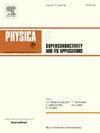Motion and thermal stability for high-temperature superconducting maglev vehicle under extreme crosswind conditions
IF 1
3区 物理与天体物理
Q4 PHYSICS, APPLIED
Physica C-superconductivity and Its Applications
Pub Date : 2025-01-15
DOI:10.1016/j.physc.2024.1354620
引用次数: 0
Abstract
High-temperature superconductor (HTS) pinning magnetic levitation (maglev) systems show significant potential for high-speed rail transportation applications, attributed to their passive and stable levitation arising from the coupling between HTS bulks and the permanent magnetic guideway (PMG). However, there is a lack of research on the operational safety of HTS maglev trains under extreme crosswind conditions as one significant safety issue of the HTS maglev transport tool. Therefore, this paper employs an experimentally validated two-dimensional electromagnetic-thermal-mechanical model to study the temperature rise variations in HTS bulks under different extreme wind scales, The maximum temperature rise inside the bulk submerged in liquid nitrogen remains below 1 K. It also preliminarily explores the wind scales that cause motion instability in HTS maglev trains. The results indicate that extreme crosswind conditions have minimal effect on the temperature rise of HTS bulks. However, under wind scale 12 conditions, HTS maglev trains face a risk of derailment. These findings offer valuable thermal-motion stability insight for informing the future design and practical implementation of HTS pinning maglev systems.
极端侧风条件下高温超导磁悬浮车辆的运动和热稳定性
高温超导体(HTS)钉钉式磁悬浮系统在高速铁路运输中具有巨大的应用潜力,由于高温超导体本体与永磁导轨(PMG)之间的耦合产生了被动和稳定的悬浮。然而,在极端侧风条件下,高温超导磁悬浮列车的运行安全性作为高温超导磁悬浮运输工具的一个重要安全问题,目前还缺乏相关研究。因此,本文采用经过实验验证的二维电磁-热-力学模型研究了不同极端风尺度下高温超导体的温升变化。研究结果表明,浸没在液氮中的高温超导体内部的最高温升保持在1 K以下。并初步探讨了引起高速磁悬浮列车运动失稳的风尺度。结果表明,极端侧风条件对高温超导体温升的影响很小。然而,在12级风力条件下,高铁磁悬浮列车面临脱轨的风险。这些发现为未来HTS固定磁悬浮系统的设计和实际实施提供了有价值的热运动稳定性见解。
本文章由计算机程序翻译,如有差异,请以英文原文为准。
求助全文
约1分钟内获得全文
求助全文
来源期刊
CiteScore
2.70
自引率
11.80%
发文量
102
审稿时长
66 days
期刊介绍:
Physica C (Superconductivity and its Applications) publishes peer-reviewed papers on novel developments in the field of superconductivity. Topics include discovery of new superconducting materials and elucidation of their mechanisms, physics of vortex matter, enhancement of critical properties of superconductors, identification of novel properties and processing methods that improve their performance and promote new routes to applications of superconductivity.
The main goal of the journal is to publish:
1. Papers that substantially increase the understanding of the fundamental aspects and mechanisms of superconductivity and vortex matter through theoretical and experimental methods.
2. Papers that report on novel physical properties and processing of materials that substantially enhance their critical performance.
3. Papers that promote new or improved routes to applications of superconductivity and/or superconducting materials, and proof-of-concept novel proto-type superconducting devices.
The editors of the journal will select papers that are well written and based on thorough research that provide truly novel insights.

 求助内容:
求助内容: 应助结果提醒方式:
应助结果提醒方式:


